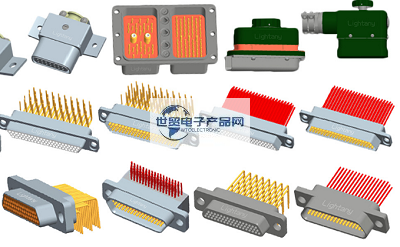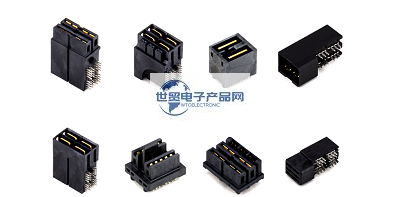Categorization:Product Information
Electrical connectors in the oil and gas industry must withstand high voltage, high temperature, corrosive environments, severe vibration and occasional impact loads, because materials are a key factor in ensuring that the connectors are designed with high reliability in harsh environments. The function of electrical connectors is simple, reliably passing current or signals from one component to another, regardless of whether the environment is benign or harsh. Faced with the high pressure and high temperature environments experienced downhole in oil and gas drilling operations, electrical connectors must operate properly at temperatures ranging from + 175 °C to + 225 °C, even up to 250 °C, and may also withstand pressures in excess of 20,000 psi.
-------------------------------------------------------------------------------------------------
While in instrument housings thousands of feet underground or below the seabed, faulty electrical connectors are not easily accessible or replaced. This requires removing the complete tool from the well, which takes a lot of time and can easily cost tens of thousands of dollars per hour, and failure is not desirable when the cost of failure is a few dollars per second. The contact quality of an electrical connector is very important. In order to keep the resistance of the contact interface low and stable, the contact must provide sufficient force between the two halves of the interface. (The minimum force required depends on the coating on the contact surface.) To prevent failure, the electrical connector must provide and maintain this contact force throughout the life of the connection. The contacts of an electrical connector require conductivity to carry large amounts of current and minimize temperature rises due to resistive heating, and good thermal conductivity helps to take away any excess heat generated by the resistance that would otherwise increase the thermal burden the connector must bear depending on the environment. Another important material property of electrical connectors in the oil and gas industry is elasticity, which is the ratio of strength to stiffness. Materials with high elasticity can withstand large strains and deformations without permanent deformation or loss of contact force. The modulus of resilience is half the yield strength multiplied by the resilience ratio, it provides a measure of how much energy a component can absorb before permanent deformation occurs, and it is similar to fracture toughness and is a measure of how much energy a component can absorb before it breaks. Since the components in the drill string are constantly rotating, the entire stress state will undergo a complete stress reversal with each rotation. This cyclic loading promotes fatigue failure because tiny defects evolve into cracks that propagate slightly with each cycle, eventually leading to sudden, catastrophic failure. It is critical to use materials that can withstand the required number of cycles at a given stress level, which is determined by the fatigue strength of the material. Typically, the strength (bending, stretching, and durability) of electrical connectors decreases as temperatures increase. If the strength is just below the level of stress the part is subjected to, the part may be permanently deformed, even if a given stress is absolutely fine at room temperature. Electrical connector components subjected to high temperatures tend to experience stress relaxation, with elastic strain slowly converting to plastic strain over time, which is equivalent to delayed permanent deformation. As the total connector stress level decreases due to relaxation, so does the contact force, which can lead to intermittent signals and even open circuit conditions at the contact interface. In the oil and gas industry, the corrosion resistance of electrical connector design materials is less important because they are usually located in sealed chambers, free of corrosive hydrogen sulfide gas or chloride salts, and away from corrosive drilling fluids. However, if the seal is damaged, it is a race against time to remove the tool from the hole before the electronic device is permanently damaged, and the corrosion resistance of the electrical connector material helps extend the service life of the component. In addition, high-strength materials for electrical connectors usually have lower conductivity, while materials with higher conductivity usually have lower strength, stronger materials are more difficult to process, and stronger materials may also exhibit more performance degradation at high temperatures, but improved resistance to stress relaxation will offset some of this risk.

---------------------------------------------------------------------------------------------------------------------------------------------------------------------------------------------------------------------------------------------------------------------------------------------------------- If you have related [connector wiring harness and cable products] purchasing/purchasing needs or want to purchase/understand which connector wiring harness and cable product solutions we can provide, please contact our business staff below; If you have related [Connector Wiring Harness Cable Products] sales/resources and promotion needs, please click "→ Business Cooperation ←" to negotiate with a dedicated person!